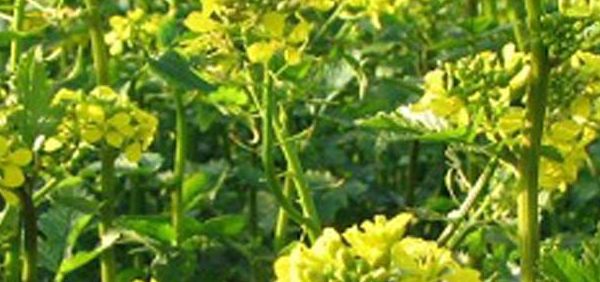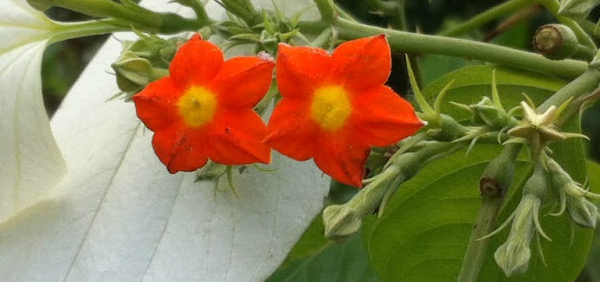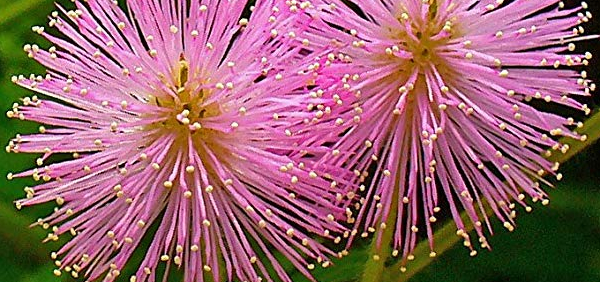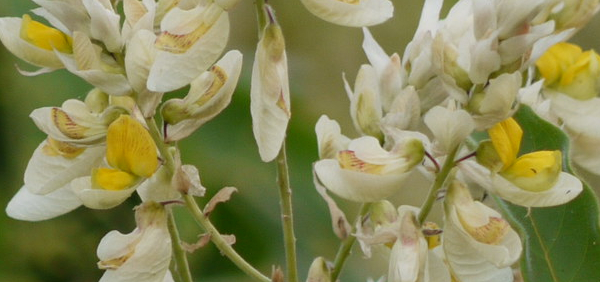Ayurveda Basic Principles
The Vedic scriptures say that there is an inextricable link between humans and the universe. The very elements of human life exist outside in the cosmos as well. As the poet Walt Whitman said, I believe a blade of grass is no less than the journey-work of the stars. In order to understand the universe and environmental situations, and to understand human health concerns, one needs to appreciate the common link between them: the elements of creation. The Vedas discuss the process of creation. First, there was the eternal, Divine, unmanifest existence: ever present. It is said that life was created from within the eternal, like a thread that comes from within a spider to be woven into a web. Creation eventually dissolves back into the eternal like the spider returning the web into itself. One may ask how the nonmoving eternal can appear to move or create something. Here, the Vedic literature, known as the Upaniahads, offers a metaphor:
Just as the desert appears to create an oasis without moving to create it, so does the nonmoving eternity appear to produce this illusory creation. The creation is called illusory because it is not lasting; only eternity is real because it is everlasting. There is not enough space in this book to justly discuss this topic. This is a mere offering into the insight of the origin of creation as explained by the ancient Vedic rishis As creation developed, it formed three underlying principles that uphold all life: the laws of creation, maintenance, and dissolution. Everything in life is born or created, it lives, and then it dies. These principles are known as sattwa, rajas, and tamas, respectfully, and are called the three gunas or tendencies. All of life, human and celestial, obey these laws.
The Elements: Building Blocks of Life The creation principle developed five essential elements-or building blocks that all life forms contain: ether, air, fire, water, and earth. We can easily see how life was created from the subtlest to the grossest matter. From eternity, the subtlest form of matter is ether. Ether mixing with eternity creates air, a more observable or experiential element. As air moves, it eventually creates friction, which creates heat or fire. Heat produces moisture, thus creating water, the densest element yet: if one tries to walk through water, one is slowed by its density. Finally, water produces the densest form of matter, earth. The Vedas say that all of the creation, including humans, is made up of combinations of all five essential elements. These elements are the subtlest aspects of human life, finer than the molecular, atomic, or subatomic levels. This is the level that Ayurvedic healing works on. Focusing on the cause of the grosser levels of life, the denser aspects will be taken care of since they are made up of these five elements. Just as a strong foundation supports a strong building, when the five elements (the foundation of all matter) are strong and balanced in a person, they will automatically balance the more material levels. Thus, Ayurveda does not need to look at isolated parts of the human anatomy, or at the vitamin, chemical, or nutritional level of health. It simply balances the elements, and this balances the more physical levels.
A person diagnosed with a duodenal ulcer is an example of this balancing. Rather than create a name for a symptom, Ayurveda identifies the illness as an excess of the fire element. Acid is a byproduct of heat. Ayurveda will look to see in what part of the patients life overheating occurs. It may be due to eating excessive fiery foods and spices like tomatoes and peppers. Ones career may be causing undue anger (i.e., hot temper). Perhaps the person drinks alcohol (firewater). Once the cause is learned, suggestions for reducing a persons excessive intake of fire are discussed. Simultaneously, the patient is advised to use more of the air and water elements to balance the heat with coolness (air cools heat, water puts out the fire). Thus, the holistic approach of Ayurveda seeks the cause of an illness and restores balance, using the insight of the elemental creation of the universe.
The Ayurvedic Body
Personalizing the healing process is a uniqueness that Ayurveda brings to the holistic field of health. From the insights of the Vedic sages, we learn that people are different and need to be individually treated.
Expanding upon this elemental view, the Ayurvedic practitioner understands that people are made up of various combinations of the elements. Some people have more air in their system; some people have a more fiery constitution. Others are predominantly made up of water. Still others are combinations of fire and air, fire and water, or air and water. Some people have an equal amount of all three elements (ether is combined in air and earth within water). Thus a more air-predominant individual needs to take in less air and more fire and water. A water person already has an excess of water, so there is a need to reduce the intake of water and to increase the fire and air elements in the diet and lifestyle.
Personalized Healing
The general Ayurvedic approach is threefold.
1. Determining ones elemental constitution (dosha or prakriti),
2. Learning the elemental cause of illness (vikriti), and
3. Applying therapeutic recommendations to balance elements causing the illness, without causing an imbalance to the dosha (constitution). This unique, personalized approach not only makes healing effective, but gentle as well. Other holistic measures may work, yet still aggravate the persons dosha. Ayurveda is the only holistic science that neednt warn people that they may feel worse while the diseases or toxins are being removed before they will feel better. Because of its balancing approach, gentleness marks the entire healing process.
Qualities of the Three Doshas Parallel to the three guoas (sattwa, rajas, and tamas) in creation are the three doshas, or constitutions, in the human body: VAyu (or VAta), Pitta, and Kapha. VAyu may be understood as nerve force, electro-motor, physical activity or that, which is responsible for motion. It is commonly called air. The root, va means to spread. In Western terms, it is the electricity setting the organism into motion, maintaining the equilibrium between Pitta and Kapha (inerts). VAyu relates to the nerve-force. It is responsible for all movement in the mind and body. The movement of VAyu even regulates the balance of Pitta and Kapha. Pitta relates to internal fire, bile, body heat, digestive enzymes, physio-chemical, biological, metabolic and endocrine systems. It is responsible for digesting the chyle into a protoplasmic substance like sperm and ovum.
The nerve network of the mind and body.
The bones are primarily affected by VAyu Pitta relates to the circulatory, endocrine, and digestive systems Kapha fills the intercellular spaces of the body as connective tissue. Examples of these tissues include mucus, synovial fluid, and tendons. Kapha is responsible for the gross structure of the body (solid and liquid/phlegm-plasma). Each person is made up of a combination of these elements. The knee bones are examples of areas that are lubricated by Kapha.
Together, the doshas are responsible for catabolic and anabolic metabolism. Catabolism breaks down complex internal bodies, and VAyu (air energy) sets this energy free into simpler waste. Anabolism takes food and builds it into more complex bodies. The summit of the metabolic process is protoplasm or essential matter [proteins, carbohydrates, lipids, and inorganic salts]. Lifeless food becomes living protoplasm and is set free as useful energy or excess heat or motion that is emitted from the body. Thus, the purpose of the three doshas is to move the lymph chyle (the by-product of digested foods) throughout the body. This nourishes and builds the body tissues. When any or all of the doshas develop imbalance, the body ceases to be nourished, and disease develops. The three doshas (VAyu, Pitta, Kapha) exist throughout the entire body, in every cell, yet are predominant (their sites of origin) in the colon, small intestine, and stomach, respectively. Some authorities say that VAyu primarily resides below the navel, Pitta from the navel to the heart, and Kapha, above the heart. VAyu is also found in (governing) the waist, thighs, ear, bones, and skin. Pitta also governs the navel, sweat, lymph, blood, eye, and skin. Kapha additionally controls the chest, throat, head, bone joints, small intestine, plasma, fat, nose, and tongue.
Properties of the Three Doshas
VAyu: Dry, light, cold, rough, subtle, moving
Pitta: Slightly oily, hot, light, odorous, liquid
Kapha: Oily, cold, heavy, slow, smooth, slimy, static.
Each of the three doshas has five divisions or responsibilities.
5 VAyus
Each of the five VAyus is responsible for various physical and mental functions of the cerebralspinal and sympathetic nerves.
Prana is located in the head and governs the chest, throat, mind, heart, sense organs, intelligence, expectorating, sneezing, belching, inspiration, and swallowing of food-outward movement.
UdAn resides in the chest and controls the nose, navel, and throat, and is responsible for initiating speech, effort, enthusiasm, the capacity to work, complexion, and memory-upward movement.
VyAn is found in the heart and rapidly moves throughout the body. It regulates all body movements, including walking, raising and lowering of the body parts, and opening and closing the eyes.
SamAn is located near the digestive fire. It works in the alimentary tract (absorbing nutrients and excreting wastes), and other abdominal organs. It holds food in the alimentary tract, helps digest it, separates nutrients from waste, and eliminates the waste-equalized movement.
Apan is seated in the colon, and controls the waist, bladder, genitals, and thighs. Its main function is downward movement of wastes (feces, urine), reproductive fluid, menstrual fluid, and it also controls the downward movement of the fetus.
5 Pittas
Pachaka exists in the small intestine, stomach, and colon as non-liquid heat, bile, or digestive fire. The fire digests and transforms food, emulsifying food fats and separating absorbable nutrients from waste, so they may be passed to lacteals by absorption. [Food becoming partially digested in the stomach is known as chyme. This chyme passes into the small intestine where it becomes digested by the pancreatic juice and bile. The usable byproduct is lymph and fatty matter, or chyle. The chyle moves through lacteals, or lymphatic vessels which carry chyle from the small intestine to the thoracic duct. From the thoracic duct, the chyle is sent into the blood.]
Pachaka (digestive enzymes), through digestion, automatically nourishes the other four Pittas.
Ranjaka is located in the stomach, liver, and spleen, and gives color to lymph chyle when it is transformed into blood as it passes through the liverand spleen.
Sadhaka is found in the heart. It helps in performing mental functions such as knowledge, intelligence, and consciousness by maintaining rhythmic cardiac contractions. Alochaka resides in the retina of the eyes and governs sight.
Bhrajaka resides in the skin. It regulates complexion by keeping secretions from the sweat and sebaceous glands of the skin active.
5 Kaphas
Avalambaka is found in the chest and creates cohesion, softness, moistness, and liquidity, which result in maintaining body strength.
Kledaka is in the stomach, liquefying hard food masses.
Bodhaka is found in the tongue and is responsible for taste.
Tarpaka exists in the head and nourishes the sense organs.
Shleshaka is located in the bone joints and lubricates them.
People who are predominantly an air (VAyu) prakriti will have different experiences depending on whether their dosha is balanced or in excess. Balanced VAyu-prakriti individuals will be adaptable, cheerful, have natural healing tendencies, be thin-framed, and very tall or very short. If there is excess VAyu in their bodies, they may be very thin, have dry skin, gas, constipation, bone problems, or arthritis. They may talk very fast or become easily tired. Mentally, they may quickly grasp concepts but soon forget them; be anxious, worried, fearful, or nervous.
Pitta-dominant individuals, when healthy and balanced, will be warm, and have clear, penetrating thoughts. They will tend to be leaders and/or athletic. They will be of moderate, muscular build, and will be passionate. When they overheat, they may find themselves impatient, hot-tempered, or too critical. Physically, they will develop heat-related problems like ulcers, infections, rashes or acne, eye problems, or high blood pressure. The Kapha-paramount individuals, when balanced, are loyal and calm. Physically, they are big boned and strong, with deep-toned voices. When Kapha is excessive, they tend toward water excesses like water retention, being overweight, or having bronchitis. Mentally, they will find themselves lethargic, too attached, and sentimental. As we discussed earlier, each person is made up of a combination of these elements, yet each usually has a combination predominantly of two or all three of these elements. These elements in turn, form three physiological principles, VAyu (ether and air), Pitta (fire), and Kapha (water and earth). Like the elements, people are predominantly made up of one or more or these doshas.
People fall into seven prakriti categories:
1. VAyu 5. Pitta/Kapha
2. Pitta 6. Kapha/VAyu
3. Kapha 7. Tridoshic (equal amounts).
4. VAyu/Pitta (combination)
These constitutions may be further subdivided,
8, 9. VAyu/Pitta (with VAyu or Pitta being predominant)
10, 11. VAyu/Kapha (with VAyu or Kapha being predominant)
12, 13. Pitta/Kapha (with Pitta or Kapha being predominant)
14-19. Tridoshic (six additional constitutions, with one or two doshas being more predominant: e.g., VAyu predominance, Pitta and Kapha predominance, etc.)
Three external reasons cause doshas to become increased (imbalanced):
1. Time of day or season (e.g., around noontime is ruled by Pitta; Fall is predominantly a VAyu time)
2. From inadequate, excessive or untimely sensory experiences (e.g., excessive loud music, overeating)
3. Actions (e.g., excessive speaking, inadequate exercise, etc.)
4. Agnis: Digestive Fire (Enzymes)
Most diseases are due to poor digestion. Agni (enzyme) is found in the alimentary canal and digests food. The normal digestion of the three doshas produces SamAgni. Digestive activity (healthy, deficient or excessive) is governed by the doshas becoming aggravated. The three doshas produce three agnis (vishamAgni, tikshnAgni and mandAgni respectively). Excess VAyu in the body produces weak, irregular digestion, and causes gas. Excess Pitta creates a situation like an overheated furnace. Food burns up quickly, and persons experience burning sensations, thirst, acid indigestion, etc. In some cases the agni fire even burns up nutrients, causing malnutrition. When excess Kapha is in the digestive tract, the digestive fire is low, making it difficult to digest any foods. As a result, a person feels dull, poor, inadequate, and lethargic; the stomach is heavy, or the person may experience constipation. VAyu disorders produce hard stools from the dryness caused by gas. Pitta stools are soft or liquid due to excess heat. Kapha stools are moderate. A healthy stool is also moderate and easily eliminated once or twice a day. Thirteen agnis reside in the body and are responsible for digestion, Jatharagni: Works at the gastrointestinal level, governing basic digestion and the 12 other agnis.
5 Bhutagnis: Metabolize the five elements that are present in the bodys tissues. They are a form of heat that is always present in all the tissues that are responsible for proper function and development of the tissues.
7 Dhatagnis: Metabolize in the seven tissues (dhAtus). This is a biochemical process beyond food digestion. It includes anabolic and catabolic activity.
Body Tissues and Wastes
(The 7 DhAtus and 3 Malas)
Tissue Layers (DhAtus)
The Ayurvedic view of the body has many similarities to modern beliefs. Seven tissue systems (dhAtus) are in the body. Each tissue is primarily governed by one of the three elements. Each dhAtu is developed or transformed out of the previous tissue layer, starting with rasa (plasma). If plasma is not healthy, then all the other layers will also be affecteTdi.ssue Layer
(DhAtus) Governing Doaha
1. Plasma (rasa) Kapha/water
2. Blood (rakta) Pitta/fire
3. Muscle (mamsa) Kapha/water
4. Fat (medas) Kapha/water
5. Bone (asthi) VAyu/air
6. Nerves -fluid/ marrow (majja) Kapha/water
7. Reproductive tissues (shukra) Kapha/water
With insight into the governing dosha, the cause of a diseased dhAtu is accurately determined. For example, if a person has cancer in the blood, we know that excess Pitta (heat, toxins) exists in the blood. If a person has osteoporosis, then too much VAyu is in the bones. Muscular Dystrophy would be an example of a muscular or Kapha problem. Once the elemental cause of the illness is known, therapies are used to balance the system through reducing the excess elements(s) and increasing the deficient one(s). Therapies include the use of herbs, foods, and lifestyle variations.
Signs and Symptoms of Vitiated Tissues (DhAtus) Body Wastes (Malas) Another important factor in health is the proper elimination of waste: feces, urine, and sweat (miscellaneous waste includes tears (eye), spit (tongue), oily secretions (skin), mucoid secretions (mucus membrane), and smegma (genitalia excreta). Malas (bodily wastes) help maintain the functioning of our organs.
Feces (purisha) provide support and tone, as well as maintaining the temperature of the colon. Improper functioning can lead to VAyu illness like worry, fear, ungroundedness, nervousness, headaches, gas, distention, and constipation. Functioning of the feces is damaged by excessive use of purgatives, colonics, worry, and fear (fear can both create improper functioning or be a by-product of this dysfunction). It is also damaged by excessive travel, the wrong foods (such as junk food, or those foods that are too light or too heavy), oversleeping, coffee, drugs, antibiotics, insufficient exercise, and prolonged diarrhea. In Ayurvedic literature it has been clearly stated that debilitated persons suffering from tuberculosis should not be given any kind of purgatives, as it is the feces that preserve the temperature of such persons. Urine (mutra) expels water and other solid wastes from the body. Poor urine elimination results in bladder pain or infection, difficult urination, fever, thirst, dry mouth, or dehydration. Diuretic drugs, alcohol, excessive sex, trauma, fright, or too few liquids damage it.
Sweat (sweda) controls the body temperature by way of expelling excess water and toxins, cools the body, moistens the skin and hair, carried excess fat from the body, and purifies the blood. Excess sweating can cause skin diseases (usually Pitta related) like eczema, boils, fungus, burning skin, dehydration, fatigue, or convulsions (VAyucaused). Deficient sweating can result in stiff hair, skin fissures, dry skin, dandruff, wrinkles, or susceptibility to colds and flu (i.e., peripheral circulation). Too much dry food, lack of salt, excess or deficient exercise, and excessive use of diaphoretic herbs or excess sweating damage the sweating functions.
Life Sap (Ojas)
Ojas (the life sap) is the essence of all the tissues
(dhAtus). It pervades every part of the body.
Tissues (DhAtus) Signs & Symptoms
Plasma (rasa) restlessness, palpitation, cardiac pain, exhaustion without cause, irritated by loud noises
Hemoglobin/Blood (rakta) roughness, dryness, skin cracks, loss of luster
Muscle (mAasa) emaciation (especially of buttocks, neck, and abdomen)
Fat (medas) cracking joints, eye lassitude, overly thin, exhaustion
Bone (asthi) falling hair, nails, teeth; loose joints
Marrow (majjA) thinness, weakness, bone lightness, VAyu bone diseases
Reproductive essence (shukra) weakness, dry mouth, pallor, lassitude, exertion, impotence, non-ejaculation of semen
(Some authorities believe ojas is a combination of eight different drops (ashtabindu) of liquid, secreted from the pineal gland.) Excessive sex, drugs, talking, loud music, insufficient rest or burnout, and high technology deplete Ojas. Signs of diminished ojas are fear, worry, sensory organ pain, poor complexion, cheerlessness, roughness, emaciation, immune system disorders, and easily contracting diseases.
Tastes (Rasas)
Ayurveda says there is a total of six tastes. Each taste is governed by a dosha. These tastes may either aggravate or pacify the doshas, dhAtus, and malas. Tastes provide varying degrees of nourishing strength. Sweet taste is the most nourishing, and as each taste becomes less nourishing, it becomes more bitter, until it is astringent-and the least nourishing.
This is also the order of tastes that get digested (so eating sweets first is better, and astringent foods last). Some authorities state that if one were to eat sweets last, the body would digest this taste first, letting the other tastes pass undigested through the system. By the time the sweets are digested, the other foods have passed through the system without being digested. Other authorities believe that a little sweet taste at the end of the meal stimulates digestion.
Every substance, including some foods, may have more than one taste (i.e., primary and secondary tastes). Substances alleviate doshas, aggravate doshas, or maintain health. When health is at least slightly in balance, persons are advised to have a little of each taste daily.

Kotakkal Ayurveda - Mother land of modern ayurveda












